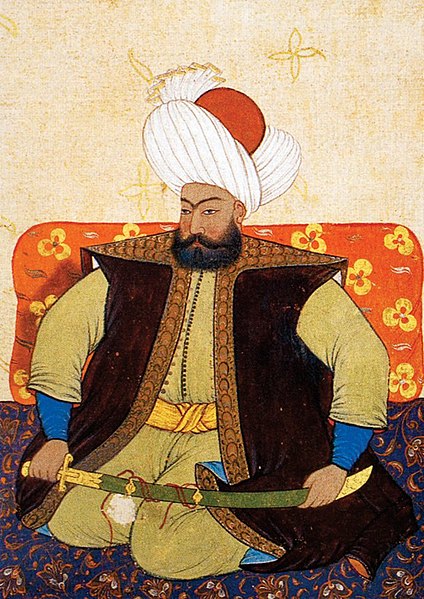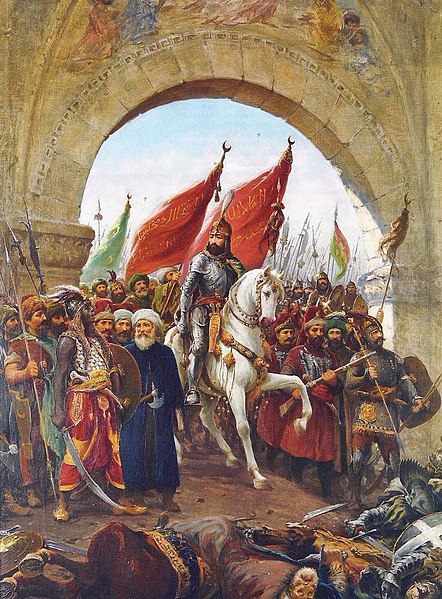The Battle of Chaldiran took place on 23 August 1514 and ended with a decisive victory for the Ottoman Empire over the Safavid Empire. As a result, the Ottomans annexed Eastern Anatolia and northern Iraq from Safavid Iran. It marked the first Ottoman expansion into Eastern Anatolia, and the halt of the Safavid expansion to the west. The Battle of Chaldiran was just the beginning of 41 years of destructive war, which only ended in 1555 with the Treaty of Amasya. Though Mesopotamia and Eastern Anatolia were eventually reconquered by the Safavids under the reign of Shah Abbas the Great, they would be permanently ceded to the Ottomans by the 1639 Treaty of Zuhab.
Artwork of the Battle of Chaldiran at the Chehel Sotoun Pavilion in Isfahan
Monument commemorating the Battle of Chaldiran built on the site of battlefield
Image: Sekumname 1525 Chaldiran battle
Image: "Shah Ismail at the Battle of Chaldiran", from Bijan’s Tarikh i Jahangusha yi Khaqan Sahibqiran
The Ottoman Empire, historically and colloquially known as the Turkish Empire, was an imperial realm that spanned much of Southeast Europe, West Asia, and North Africa from the 14th to early 20th centuries; it also controlled parts of southeastern Central Europe between the early 16th and early 18th centuries.
Ottoman miniature of Osman I by Yahya Bustanzâde (18th Century)
The Battle of Nicopolis in 1396, as depicted in an Ottoman miniature from 1523
Sultan Mehmed the Conqueror's entry into Constantinople; painting by Fausto Zonaro (1854–1929)
Ottoman miniature of the Battle of Mohács in 1526








